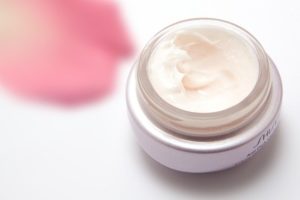APPLICATIONS OF TECHNOLOGY:
- Food products
- Cosmetics
- Water and wastewater treatment
- Pharmaceuticals
BENEFITS:
- Significantly lowers the costs of product recovery from cyanobacterial production strains
- Self-aggregating properties of the material streamline the processes of flocculation and clarification
- Enables novel encapsulation and drug formulation processes and products
BACKGROUND:
- Existing commercialized bacterial exopolysaccharides include xanthan and gellan, both heavily used in the food industry with xanthan production exceeding 20,000 tons/year. Other gel-forming polysaccharides include gelatin and chitosan; as both are derived from animal products, there is a significant market for non-animal derived alternatives. Certain polysaccharides, including chitosan, form gels at low pH, but there have been no documented reports of polysaccharides (including commercial and non-commercial materials) that remain in solution at low and neutral pH with spontaneous gel formation at high pH.
TECHNOLOGY OVERVIEW:
Researchers at Berkeley Lab led by Deepti Tanjore and researchers at HelioBioSys have developed a method of producing a polysaccharide gel from cyanobacterial slurries that contain <1% solids concentration. Notably, they discovered a cyanobacterial polysaccharide with the unique property of undergoing gel transition at pH greater than 10.5.
Polysaccharides were separated via gel formation in a two-step process that involved centrifugation and pH adjustment. Use of pH adjustment to harvest polysaccharides streamlines recovery, lowering the cost of materials for a variety of applications. Such a reduction in the product recovery cost would overcome a major scale-up hurdle and enable new avenues for commercialization.
Gel formation catalyzed by shifts in pH is a property that has not been previously described in the scientific literature. This characteristic holds potential industrial applications in two key areas: 1) improved recovery of polysaccharides from saline aqueous solutions and 2) use of spontaneous, pH-triggered gel formation for applications such as encapsulation, drug delivery, and coatings.
DEVELOPMENT STAGE: Proven principle
PRINCIPAL INVESTIGATORS:
- Mona Mirsiaghi
- Eric Sundstrom
- Deepti Tanjore
- Todd Pray
STATUS: Published U. S. Patent Application 15/943,597 (Publication US2018-0282826).
OPPORTUNITIES: Available for licensing or collaborative research.

